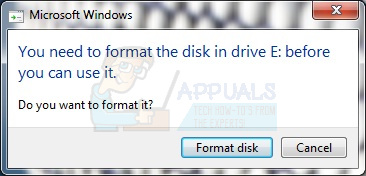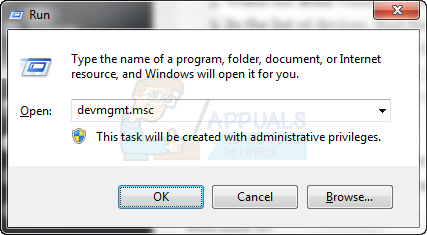How to Fix Format Disk Error External Hard Drive
If you’re using an external drive, be it for storage or for simply backing up your important data, you might have noticed that in some situations, your computer doesn’t load the drive. You connect it, but nothing happens, and you can’t access the files on it. How big of a problem this is will depend on how important the data on the drive is, but it will be an issue nevertheless. Another thing you will notice is that when you remove the drive, you might get a pop-up saying you will need to format the drive before you use it.

For many users formatting means losing loads of important data, and isn’t really an option. However, the main cause of this issue is often either corrupted drivers, or corrupted file system on your drive. Both problems are fairly simple to solve, and may appear from nowhere, so read on to see what you can do to gain access to your files again.
Method 1: Use CHKDSK from the Command Prompt
CHKDSK is one of the most powerful built-in tools that come with Windows, and it’s used to check your drives for corruption and fix any errors that may appear. This means that if the problem with your external drive is corruption, CHKDSK will most likely fix it.
- Press the Windows key on your keyboard, and type in cmd. Right-click the result and select Run as administrator.

- When the Command Prompt opens, type in chkdsk F: /x , and hit Enter on your keyboard. Note that you should replace F with the letter of your external drive, which you can see in My Computer/This PC.

- Wait for CHKDSK to complete the scan, and give you the report. If there was any issue with the drive, CHKDSK will most likely fix it and tell you when it’s done.
Method 2: Uninstall the device from Device Manager
If the issue is with corrupt drivers, you can fix it by uninstalling your device from Device Manager. Next time you boot your computer, it will automatically install the latest drivers and you will have your drive available and working properly.
- Press the Windows and R keys on your keyboard simultaneously.
- When the Run window opens, type in devmgmt.msc and press Enter.

- In the list of devices, find the USB Serial Bus Controller (usually near the bottom) and expand it.
- You should see your device here. Right-click it, and choose Uninstall from the menu.
- Follow the wizard to uninstall the device, and reboot your device. Once you’ve rebooted, the drivers for your device will be automatically reinstalled, and it should be working properly, provided the drivers were the problem in the first place.
Having an external hard drive not showing all the data you’re storing on it can be a disaster, especially when you take into consideration the fact that many users use external storage devices to back-up their important data. At the end of the day, if you follow the simple instructions in the methods above, you will have your drive working properly again.